Sweet sour kraut is a culinary phenomenon with deep cultural roots. Its origins can be traced back to Eastern European cuisine, where it has long been a staple.
Sweet-sour kraut’s unique taste and flavor profile come from the combination of tangy cabbage, spices, and a touch of sweetness, often achieved by adding brown sugar or white sugar. You can enjoy this versatile side dish in various ways, from topping hot dogs to accompanying pork ribs.
Here we will delve into the phenomenon of sweet-sour kraut, exploring its unique flavors and how it can elevate your meals to new heights. So, grab your apron and get ready to savor the deliciousness of sweet-sour kraut like never before.
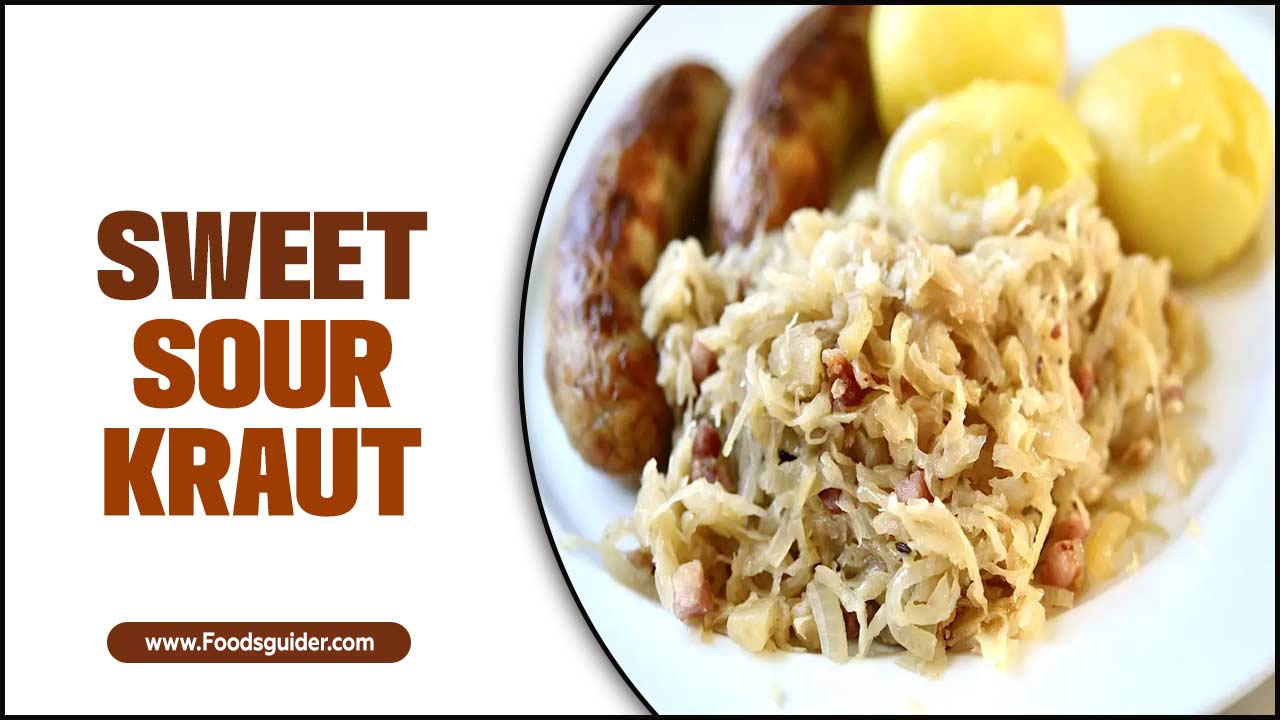
Step-By-Step Guide To Making Sweet Sour Kraut
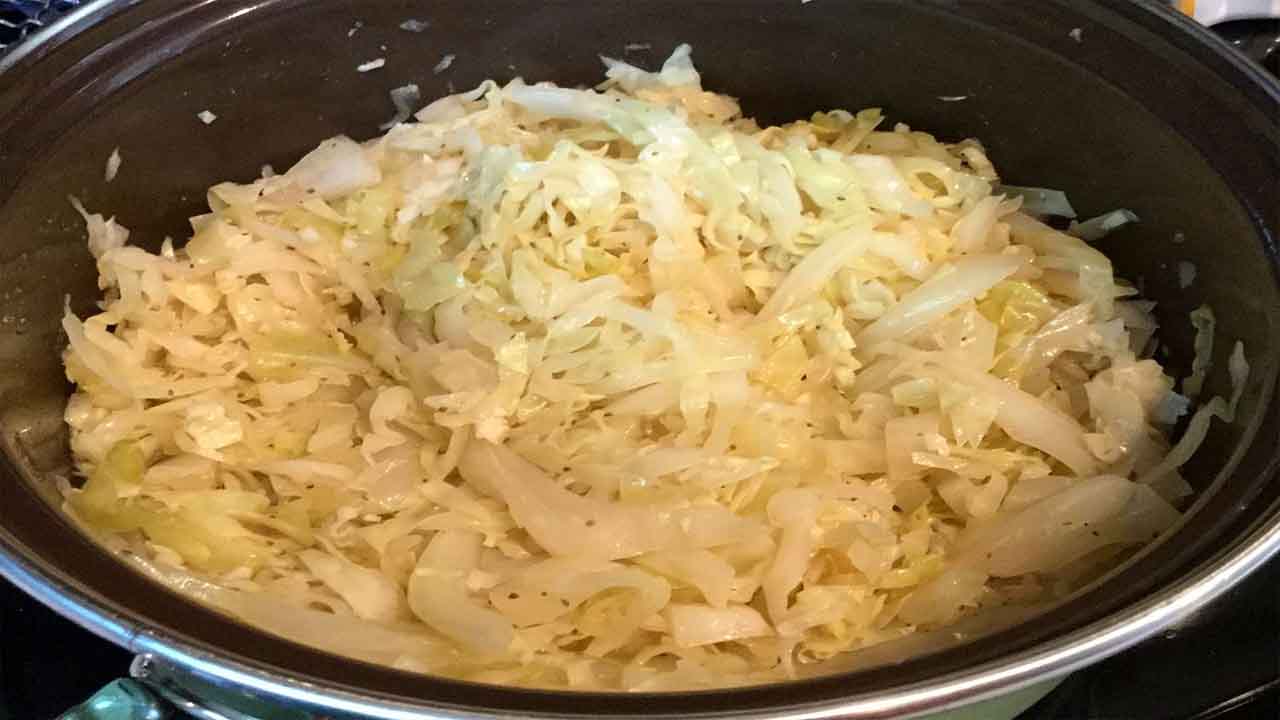
To make sweet sour kraut, gather cabbage, salt, sugar, vinegar, and spices. Shred or chop the cabbage and mix it with salt. Let it sit to release juices. Pack the cabbage into jars, adding sugar, vinegar, and spices. Use a weight to keep it submerged in the brine. Ferment at room temperature for weeks. Below we provide full guidelines in detail.
Key Ingredients For Perfect Sweet-Sour Kraut
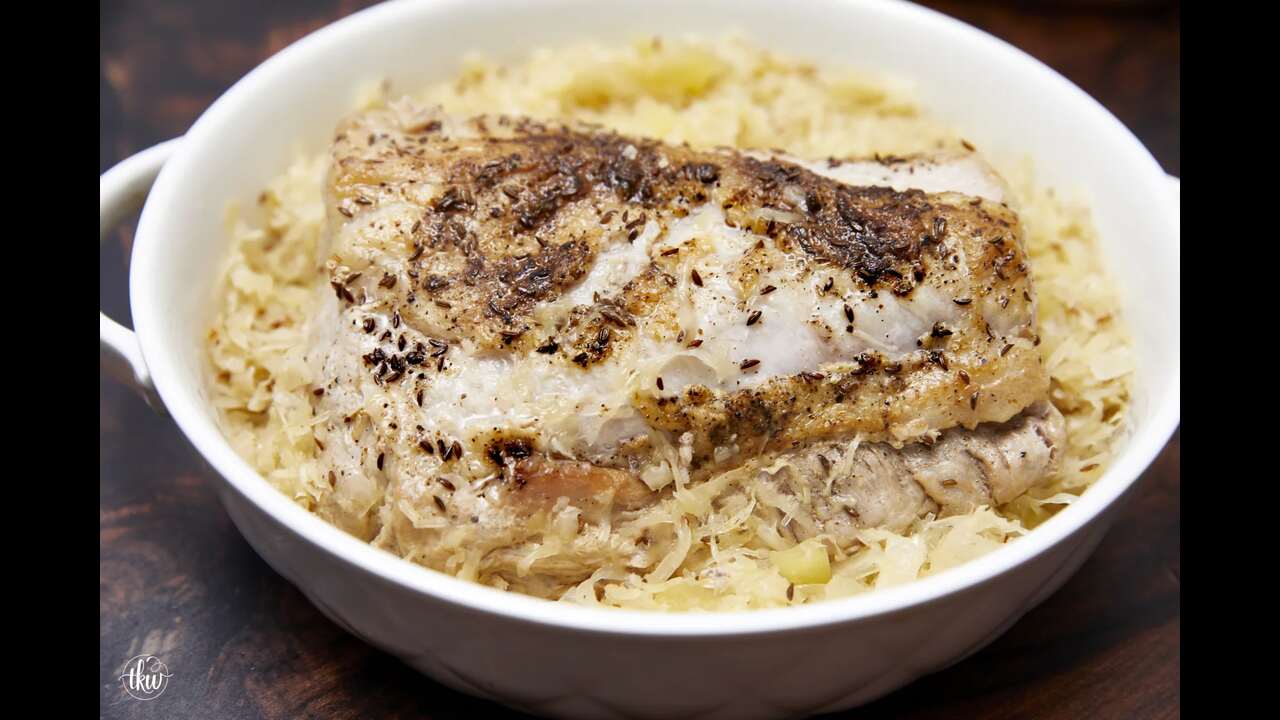
When it comes to perfecting the taste of sweet-sour kraut, there are key ingredients that you shouldn’t overlook. Cabbage is the star ingredient, providing the base flavor and texture. Salt is essential for fermenting the cabbage and creating a tangy taste.
Sugar adds sweetness to balance out the tanginess. Caraway seeds, though optional, are commonly handy for their aromatic and slightly nutty taste. And apple cider vinegar gives a subtle tanginess while assisting fermentation. These ingredients are the building blocks for a delectable batch of sweet-sour kraut.
Choosing The Right Vegetables For Making Sweet-Sour Kraut
When making sweet-sour kraut, cabbage is the primary vegetable handy. However, you can incorporate carrots, onions, and bell peppers for added flavor. Selecting fresh and firm vegetables to achieve optimal taste and texture is important.
Experimenting with different vegetable combinations allows you to create a unique flavor profile. Consider using organic or locally sourced vegetables for a more sustainable kraut-making process. Don’t be afraid to get creative and try unconventional vegetables like purple cabbage or radishes for a twist on traditional sweet-sour kraut.
Preparing The Vegetables For Making Sweet-Sour Kraut
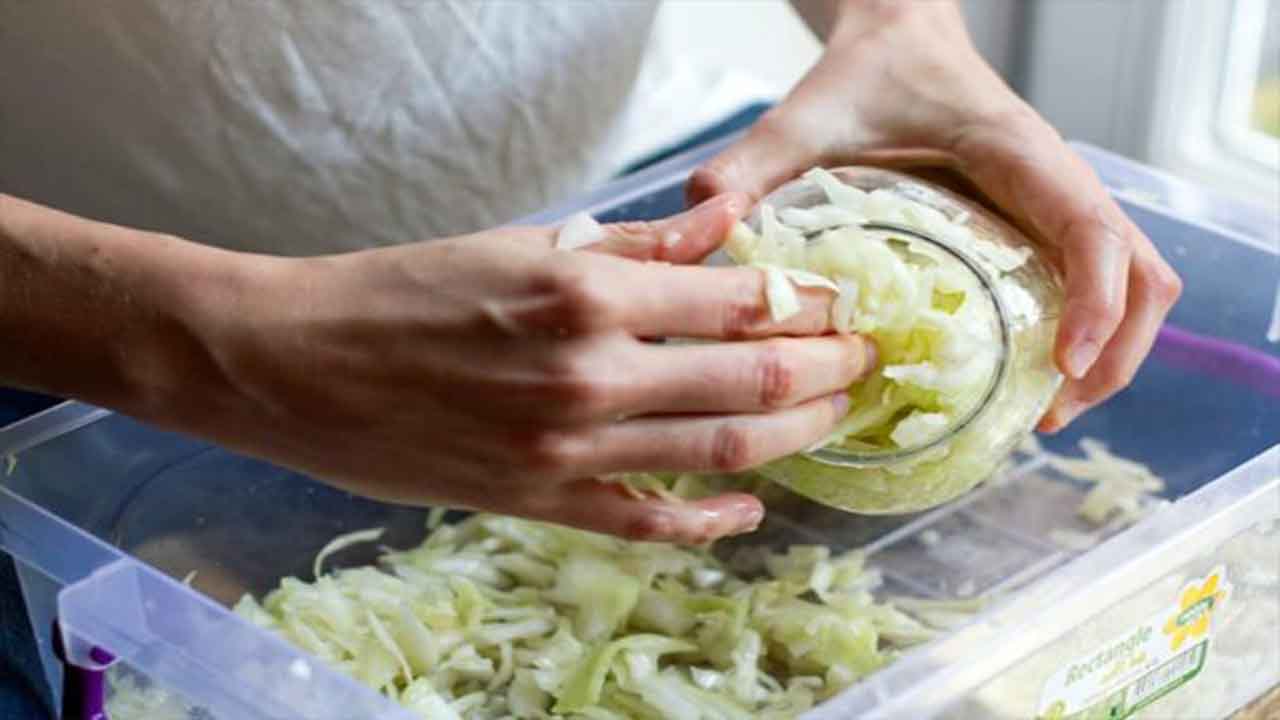
To create a mouthwatering sweet-sour kraut, it is essential, to begin with fresh and crispy cabbage. Ensure you thoroughly wash the cabbage, removing any outer leaves that are damaged or discolored. Slicing the cabbage into thin and uniform strips will result in consistent fermentation.
You can also incorporate vegetables such as carrots or onions into the mix for an extra burst of flavor and texture. To facilitate the fermentation process, don’t forget to salt the cabbage to draw out its moisture generously.
Fermenting The Vegetables For Making Sweet-Sour Kraut
Fermenting vegetables is a crucial step in the process of making sweet-sour kraut. It involves allowing the vegetables to sit in a brine solution for a specific period of time. This fermentation process creates a tangy and slightly sour flavor in the kraut, which adds to its uniqueness.
Monitoring fermentation is essential to ensure the kraut develops the desired taste. The length of fermentation can vary depending on personal preference and the desired intensity of flavors.
Serving And Enjoying Sweet-Sour Kraut

Serving and enjoying sweet, sour kraut is a delightful experience. This versatile condiment can be a side dish or tangy topping for sandwiches and hot dogs. Pair sweet-sour kraut with grilled meats or sausages for a mouthwatering flavor combination.
Get creative and experiment with different serving methods, such as adding it to salads or using it as a filling for pierogies. Don’t forget to savor the probiotic benefits of homemade sweet-sour kraut while relishing its delicious taste.
Packaging And Storing Your Sweet-Sour Kraut
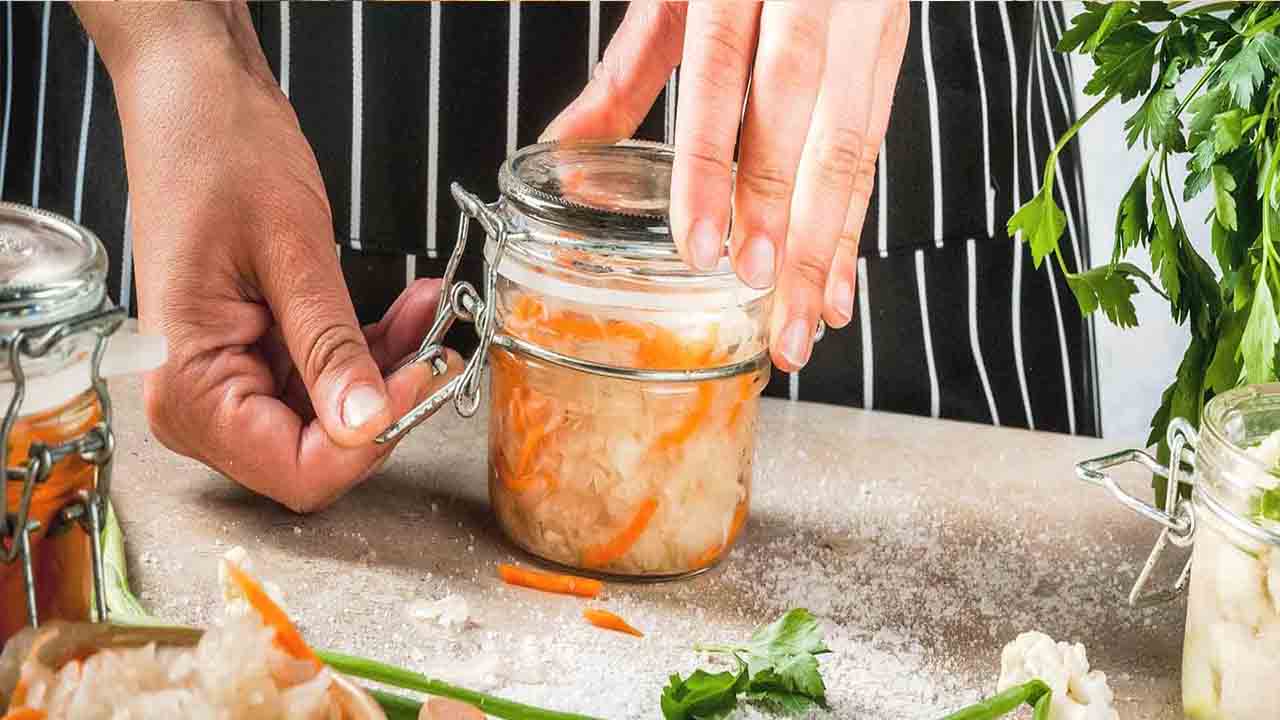
Properly packaging and storing sweet-sour kraut is crucial for maintaining its taste and quality. Glass jars with airtight lids are recommended to prevent spoilage. Before sealing the jar, ensure no air bubbles and that the kraut is fully submerged in the brine. Store the jars in a cool, dark place like a pantry or cellar to preserve the flavors. Once opened, refrigerate the sweet-sour kraut to extend its shelf life and keep it fresh.
Expert Tips For Enhancing The Taste
Enhancing the taste of sweet-sour kraut is all about experimenting with different ingredients and techniques. To add depth of flavor, try using a combination of cabbage and other vegetables. Spice things up with caraway seeds or dill, or add a touch of sweetness with apples or honey.
Don’t be afraid to get creative and try unique flavor combinations like ginger or chili flakes. And remember, fermentation time can also play a role in achieving the desired level of tanginess. So go ahead and let your taste buds guide you.
Can You Modify The Recipe For Dietary Restrictions?

If you have dietary restrictions, it is absolutely possible to modify the sweet-sour kraut recipe to suit your needs. You can easily substitute ingredients with alternatives that align with your dietary preferences. For example, following a vegan or vegetarian diet, you can use plant-based ingredients instead of animal products.
Additionally, you can adjust the seasonings to cater to your taste preferences and experiment with different vegetables or add-ins to create a unique flavor profile that suits your dietary needs and preferences. Don’t be afraid to get creative and make the recipe your own!
Types Of Kraut
The world of kraut offers many options to explore and enjoy. Traditional sauerkraut is the classic choice, made by fermenting cabbage with salt for several weeks to develop its distinct tangy flavor. Sweet sauerkraut incorporates sugar or honey into the fermentation process for those looking for a milder sweetness.
If you prefer a tangy and savory taste, sour pickle, and kraut combine cabbage with pickling spices. For those who enjoy a spicy kick, there’s spicy kraut, which adds hot peppers or spices for an extra punch of heat. Lastly, fruit kraut introduces fruits like apples or cranberries, resulting in a unique sweet-tart flavor that will delight your taste buds.
Ways To Enjoy Sweet-Sour Kraut

It is important to enjoy sweet-sour kraut because it adds a burst of flavor to dishes and offers a range of health benefits. Sweet-sour kraut is packed with vitamins and minerals, including vitamin C, which can help boost the immune system and promote overall health. Here are a few ways to enjoy sweet, sour kraut.
- Top your hot dogs or sausages with a tangy kick of sweet-sour kraut.
- Add a flavorful twist to your salads by incorporating sweet-sour kraut.
- Enjoy the perfect side dish by pairing grilled meats with sweet-sour kraut.
- Elevate your sandwiches or burgers with the delicious condiment of sweet-sour kraut.
- Get creative in the kitchen by experimenting with sweet-sour kraut in pierogi or stuffed cabbage roll recipes.
Conclusion
sweet sour kraut is a taste sensation that can elevate any dish. With the step-by-step guide, you can easily make your own batch of delicious sweet-sour kraut at home. Remember to choose the right vegetables and follow the fermentation process carefully for the best results.
Once ready, you can enjoy sweet-sour kraut on its own, as a topping, or even incorporate it into various recipes. Don’t be afraid to experiment with different flavors and ingredients to enhance the taste to your liking. Whether you’re a kraut enthusiast or new to this flavorful condiment, sweet-sour kraut will surely delight your taste buds and add a tangy twist to your meals.
Frequently Asked Questions
1.What Type Of Sauerkraut Is Sweet?
Ans: Sweet sauerkraut gets its sweetness from ingredients added during fermentation, like sugar, apples, pears, or honey. The length of fermentation and the type of cabbage also affect the level of sweetness. Experiment with flavors to find your perfect balance of sweet and sour.
2.Is Bavarian Style Sauerkraut Sweet?
Ans: Bavarian style sauerkraut is typically not sweet. Unlike other regions or styles, such as American or Polish, traditional Bavarian sauerkraut has a tangy and slightly sour flavor. However, variations of sauerkraut recipes can exist, so it’s possible to find sweet versions in some cases.
3.What Is Bavarian Sauerkraut Made Of?
Ans: Bavarian sauerkraut is crafted from fermented cabbage, with the addition of salt, water, and sometimes spices. Through the fermentation process, this kraut develops its distinctive tangy flavor. It is commonly enjoyed as a side dish or topping in German cuisine.
4.What Is Sweet Sauerkraut Pork?
Ans: Sweet Sauerkraut Pork is a mouthwatering dish that combines tangy sauerkraut with sweet ingredients like brown sugar or honey. The pork is cooked with the sauerkraut to infuse it with flavor. This versatile dish can be enjoyed as a main course or as a filling for sandwiches and tacos.
5.Why Would I Want To Sweeten Sauerkraut?
Ans: Adding a touch of sweetness to sauerkraut can balance out its tanginess and create a unique flavor profile. Whether enjoyed alone or with other dishes, sweetened sauerkraut offers a delightful taste experience. Experimenting with different flavors in kraut can elevate your culinary adventures.
